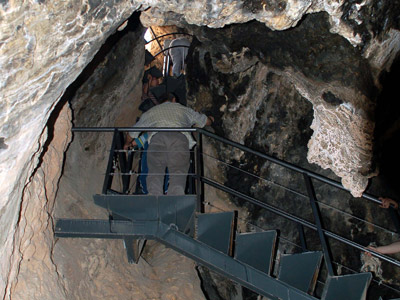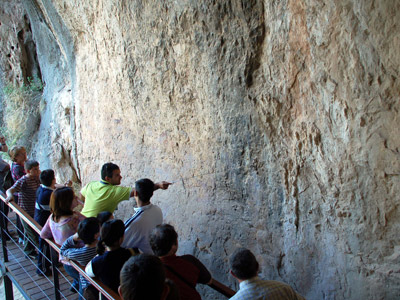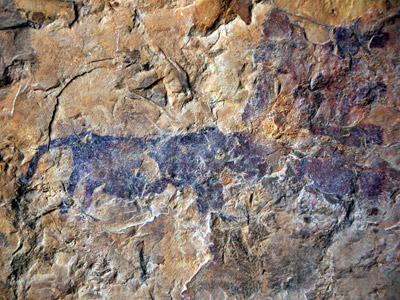The Cave of The Serreta
Plaza de España
30530
CIEZA
Telephone: +34 968 453 500
/ Fax: 868 963 423
e-mail: oficina.turismo@cieza.es
The Almadenes canyon can be found between Cieza and Calasparra, taking advantage of a tectonic fault that has layers of dolomias and limestones. The Segura River flows through the canyon at an average of 70 mts,although the walls reach 120 mts of height in some points. The paintings have been declared Patrimony of the Humanity by UNESCO in 1998. The cave is in the left-hand side, in a wonderful landscape of great visual impact, and hardly accesible from the outside. The Serreta has witnessed the passing of time from prehistory to recent times and has seen various occupants from Neolithic, Romanization and the Islamic Average Age, turning it into a Sanctuary of Rock Art, Neolithic habitat and Late-roman refuge. These three elements, taken with the spectacular location, turn this cave into one of the most significant of the region, and with equal importance art regional and national level. In the cave more than fifty rock art figures appear, distributed in two panels, pertaining to the Schematic Art, that includes in this case some figures of seminaturalist style. The good state of conservation of the paintings, recovered in 2002 and 2003 (with the Council of Education and Culture), the extensive number of figures and the exceptional character of some of them, turned the Serreta into one of the most important stations of Rock in the whole of Murcia. In the Cave, interesting findings have been made of wheat seeds and barley that demonstrate the oldest origins of agriculture hitherto documented in Murcia.
Se encuentra en el margen izquierdo del río Segura, en el borde del cañón cárstico de "Los Almádenes".
Otra apertura, de grandes dimensiones, se abre hacia el interior del mencionado desfiladero permitiendo una gran iluminación natural de las pinturas rupestres así como la zona más habitable de la cavidad.
En total aparecen en la cavidad 50 figuras, repartidas en dos paneles y pertenecientes en su totalidad al Arte Rupestre Esquemático, que incluye en este caso algunas figuras del estilo seminaturalista.












